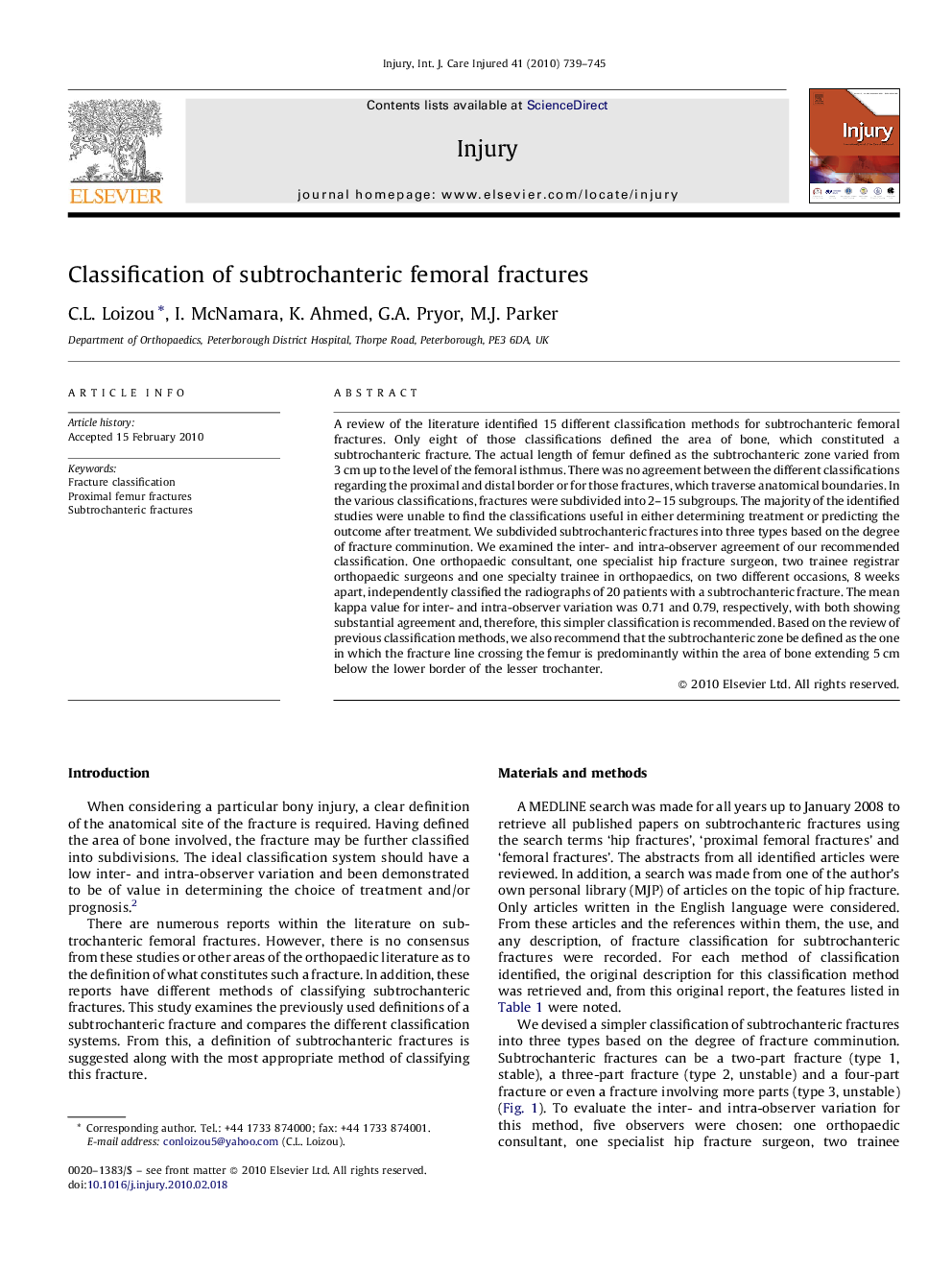| Article ID | Journal | Published Year | Pages | File Type |
|---|---|---|---|---|
| 3240174 | Injury | 2010 | 7 Pages |
A review of the literature identified 15 different classification methods for subtrochanteric femoral fractures. Only eight of those classifications defined the area of bone, which constituted a subtrochanteric fracture. The actual length of femur defined as the subtrochanteric zone varied from 3 cm up to the level of the femoral isthmus. There was no agreement between the different classifications regarding the proximal and distal border or for those fractures, which traverse anatomical boundaries. In the various classifications, fractures were subdivided into 2–15 subgroups. The majority of the identified studies were unable to find the classifications useful in either determining treatment or predicting the outcome after treatment. We subdivided subtrochanteric fractures into three types based on the degree of fracture comminution. We examined the inter- and intra-observer agreement of our recommended classification. One orthopaedic consultant, one specialist hip fracture surgeon, two trainee registrar orthopaedic surgeons and one specialty trainee in orthopaedics, on two different occasions, 8 weeks apart, independently classified the radiographs of 20 patients with a subtrochanteric fracture. The mean kappa value for inter- and intra-observer variation was 0.71 and 0.79, respectively, with both showing substantial agreement and, therefore, this simpler classification is recommended. Based on the review of previous classification methods, we also recommend that the subtrochanteric zone be defined as the one in which the fracture line crossing the femur is predominantly within the area of bone extending 5 cm below the lower border of the lesser trochanter.
